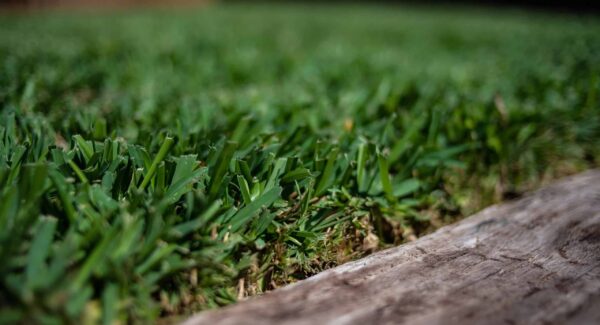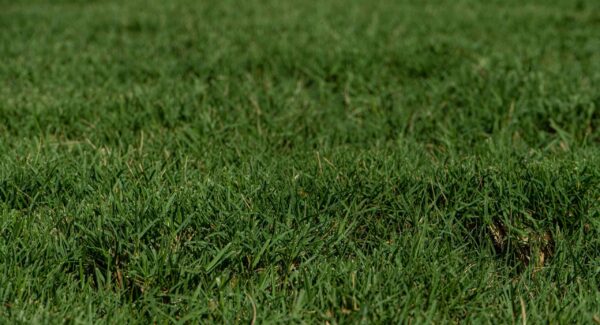What Is Dethatching, And Why Does Your Lawn Need It?
Everyone with a lawn knows it requires attention and care to maintain its health and the most beautiful shade of green. Proper lawn care and neatness contribute to the overall aesthetics of your home’s yard, and we all like to spend unforgettable family moments in the yard.
What methods exist for keeping your lawn healthy, and what do they all entail? Whether from experts or neighbors and friends, you’ve likely received advice to perform dethatching once or twice a year. You’re in the right place to learn what this process means – when to perform dethatching, which machines to use, why it’s essential to do dethatching at specific times of the year, and what steps in lawn care follow after dethatching.
Dethatching your lawn is one of the methods of maintaining it and plays a vital role. It’s a process that removes dead grass, moss, or leftover leaves from the soil’s surface in your lawn. This organic material prevents light, water, and nutrients from reaching the grass’s roots, which hinders its growth since all the nutrients stay on the surface. Additionally, the dead layer left on the surface is a breeding ground for pests and fungal diseases in the grass, which you want to avoid.
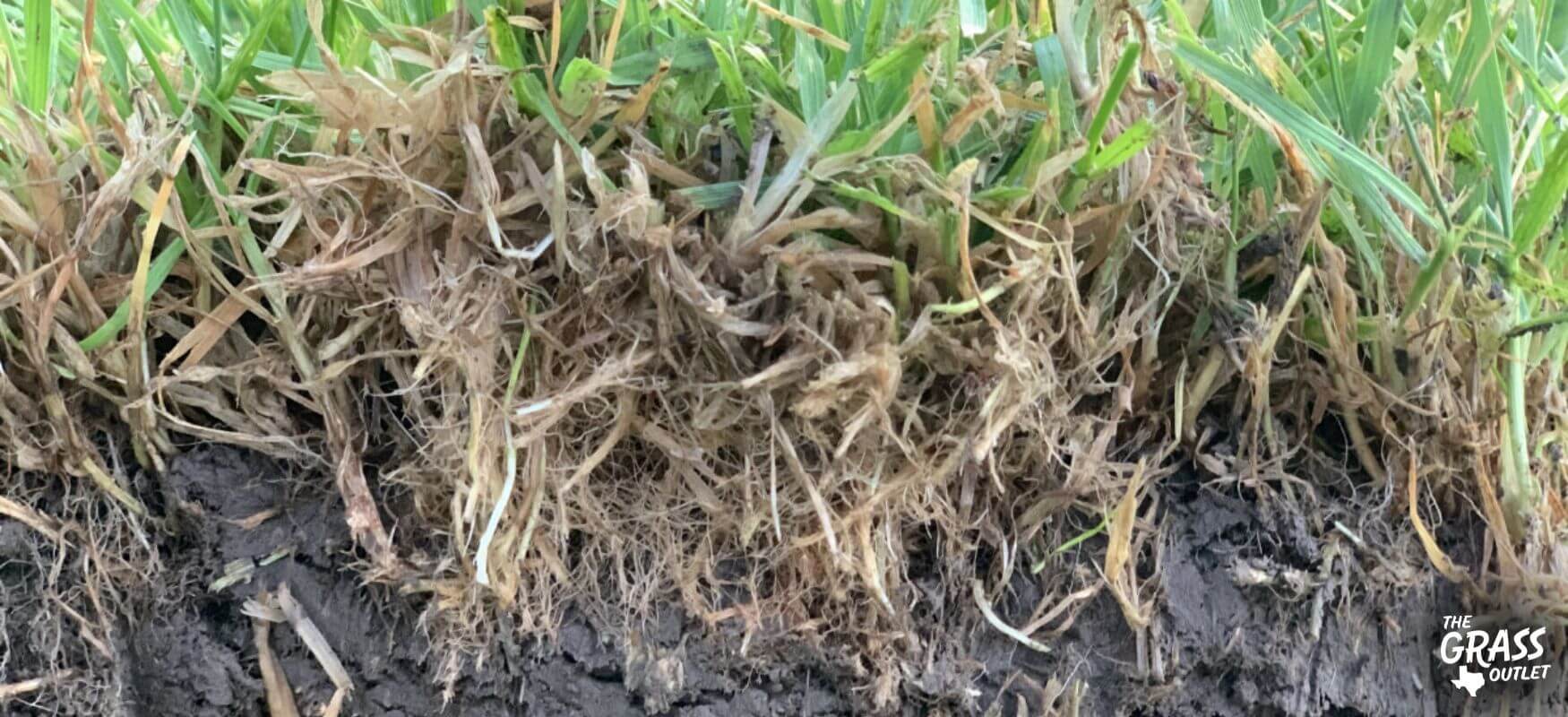
What Exactly Is Thatch?
Thatch is a layer of organic matter that forms between the soil and the upper level of a lawn’s grass. It typically consists of dead grass remnants, leaves, and other organic materials. Thatch doesn’t necessarily negatively affect the lawn and serves a natural and protective function. Whether it has a positive or negative impact on the grass depends on the thickness of the thatch layer. A thinner layer can be beneficial because it protects the soil from extreme external conditions and excessive water penetration. Thatch also increases the lawn’s wear resistance.
When Does Thatch Become A Problem, And Why Is It Essential To Remove It?
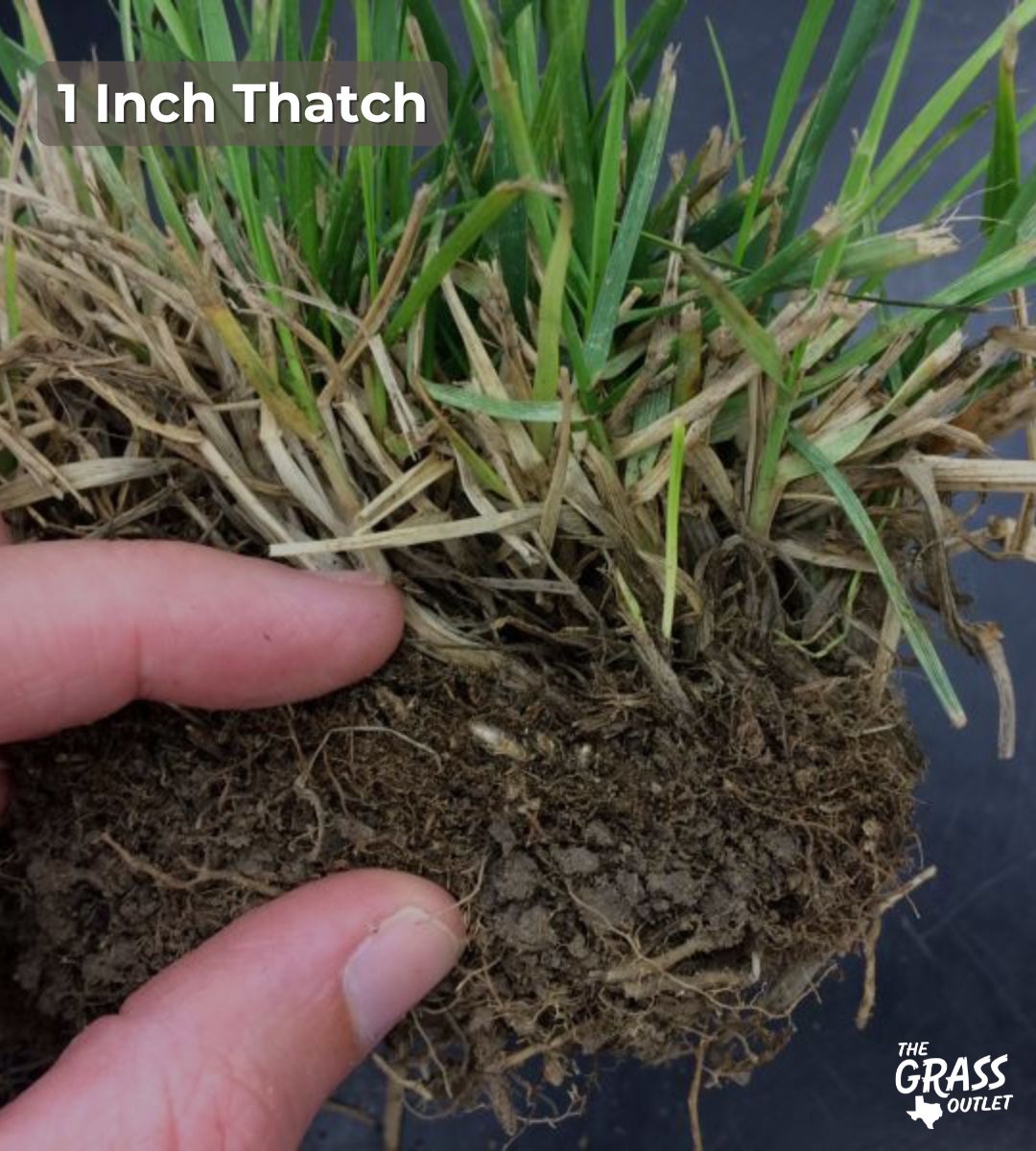
The natural growth process of grass involves the generation of new shoots at the same rate as the old ones die off. During this process, thatch forms from the remains of grass and other materials, which naturally decompose. However, if this layer accumulates and the process doesn’t proceed naturally, it should be removed to make the lawn healthier and more attractive.
A thicker thatch layer can inhibit air and moisture penetration, preventing oxygen from reaching the roots, making fertilizing lawn less effective, and leading to fungal diseases. Weeds and moss can also develop, especially in compacted, clayey soil and shady areas. The grass may turn yellow and not grow as it should, and insect infestations can also occur.
In such cases, you should undertake some steps to rejuvenate the lawn. A thatch thickness of 1 inch indicates that dethatching is necessary.
How Does The Process Of Dethatching Work?
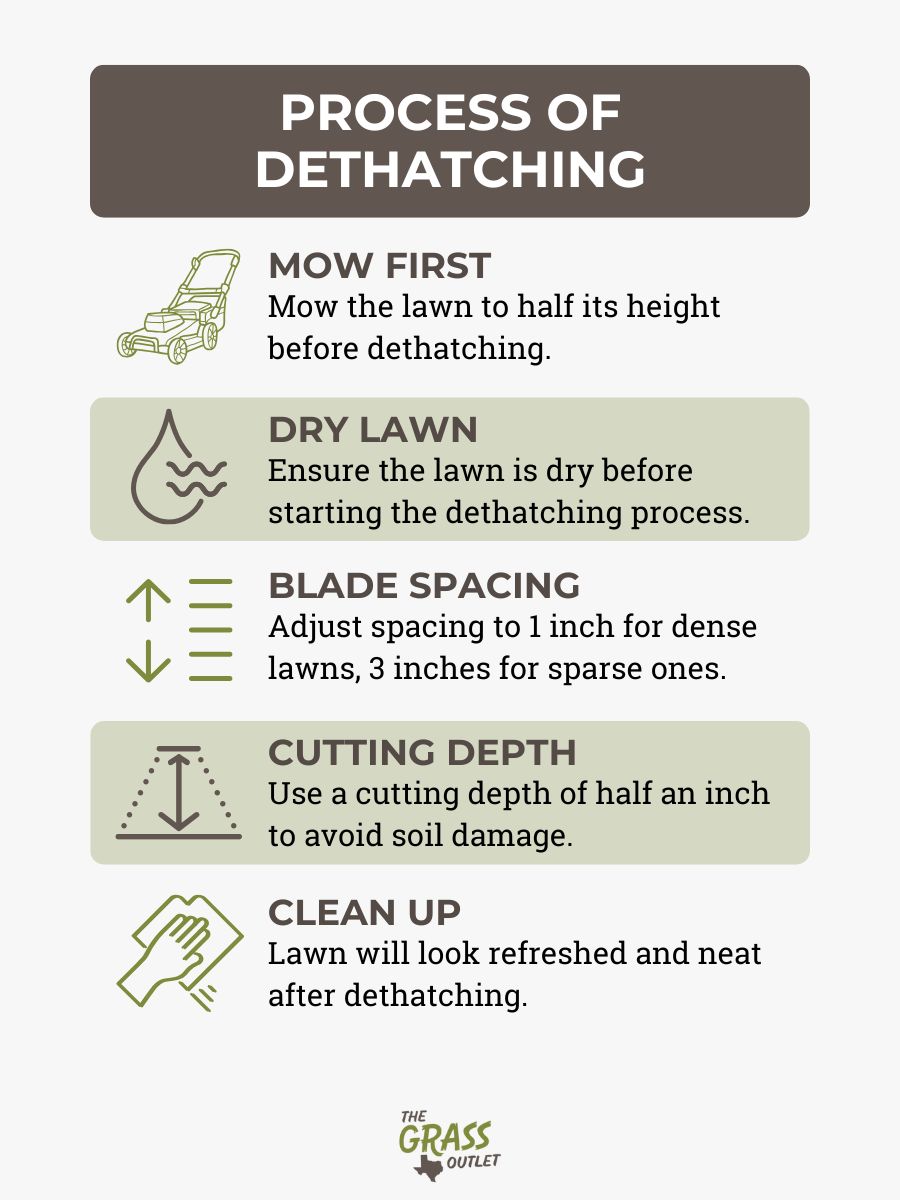
The dethatching process involves machines called dethatchers, which work by cutting through the layer of organic matter, bringing it to the surface, and collecting it in a separate box that you can quickly empty, and the process continues. Before starting dethatching, mowing the lawn to half its normal height is necessary, ensuring you follow the ⅓ mow rule. Avoid fertilizing it for approximately 45 days before the dethatching process. The lawn should be dry before dethatching.
As you read the operating instructions, you’ll see an option to adjust the spacing between the blades on the machine. Typically, it’s recommended to set the spacing at around 1 inch for denser lawns, while for sparser lawns, a spacing of about 3 inches is advised.
In addition to blade spacing, the next important factor is adjusting the cutting depth. If the lawn is low, you should make a deeper cut but not damage the soil. A standard recommendation is a cutting depth of half an inch.
After completing the dethatching process, you will immediately notice that the lawn looks refreshed, neater, and more attractive.
How Can Dethatching Be Done?
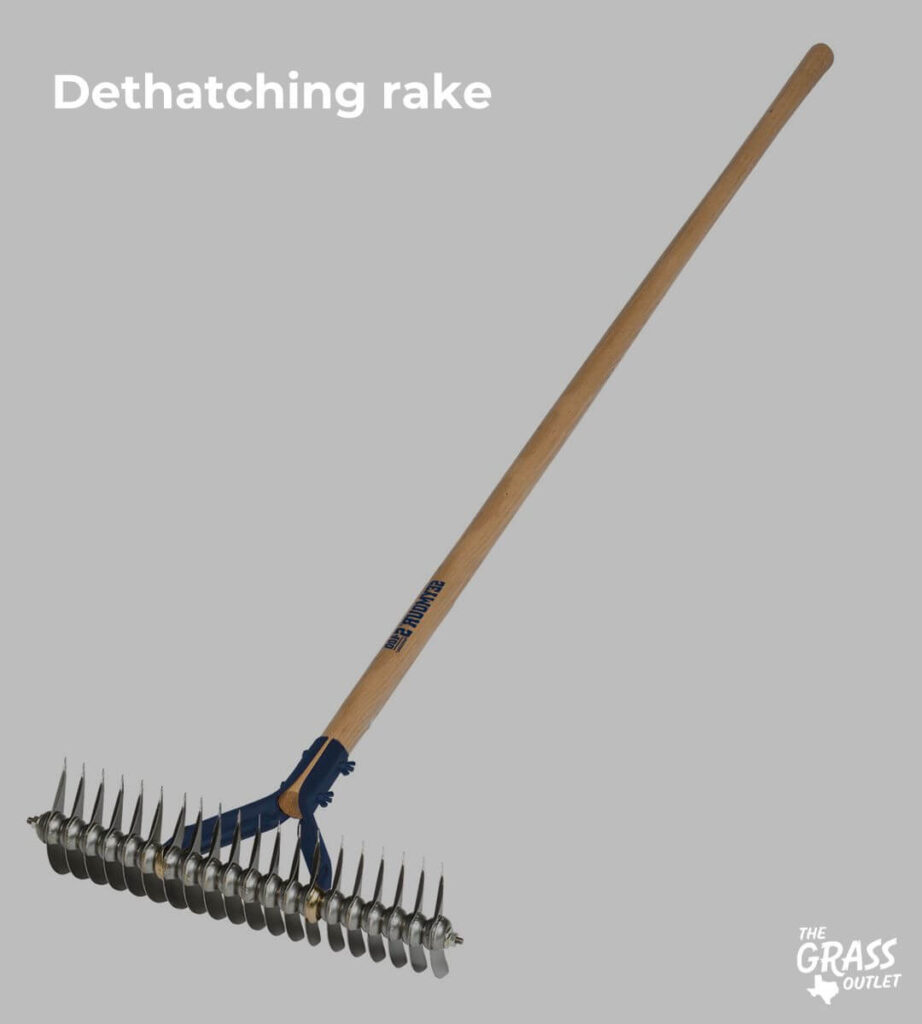
Depending on the lawn size, you can choose between machines with motorized drives or manual rakes. Manual or mechanical rakes are suitable for smaller lawns. They are practical, affordable, and only require physical effort. This tool is highly durable and virtually indestructible.
Electric dethatchers operate on electricity or battery power and are used for lawns ranging from 7 to 15 acres. They work quietly, have ergonomically designed handles for easy control, and weigh around 26-44 lbs. Their working width is up to about 16 inches.
Gas-powered dethatchers are used for lawns larger than 15 acres, which makes them professional equipment because they can efficiently perform dethatching on large areas. They do not rely on electricity supply.
Benefits Of Dethatching:
- Proper grass growth, healthier and tidier appearance.
- Enhanced water and nutrient absorption efficiency.
- Reduced occurrence of moss and weeds.
- Proper root development.
- Increased lawn resistance to pests and diseases.
- Easier seeding.
- Reduced water retention.
You don’t need to worry about damaging the lawn through dethatching; it won’t harm it if done correctly. This method contributes to more efficient and natural lawn development. It doesn’t create holes in the soil but ventilates the lawn, improving soil quality. Dethatching allows water, air, and light to penetrate more efficiently, leading to faster grass growth and a denser and healthier lawn, making manual raking easier.
What To Do After Dethatching?
After removing thatch, the goal is to nourish the lawn and restore its vitality correctly. You should introduce mineral fertilizers containing a high percentage of nitrogen (around 25%), with phosphorus and potassium content. After fertilizing, it’s advisable to water the lawn, applying about 1 inch of water per irrigation zone. After completing all the tasks – dethatching, fertilizing, and watering – the lawn will noticeably become healthier and more beautiful within a few days.
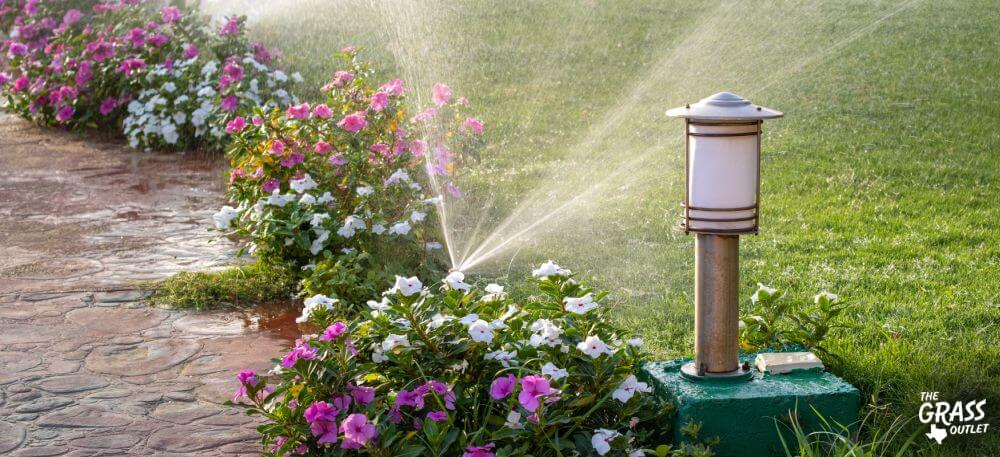
Experts typically recommend fertilizing three times yearly – in March, June, and September. Adding humic acids to the soil makes it more fertile and healthier (encouraging the natural growth of microorganisms), providing a solid foundation for breaking down thatch on the surface. A dense lawn will prevent the development of weeds and moss.
What Is The Best Time For Dethatching?
The optimal time for dethatching your lawn is in the spring when your grass is entering its active growing season. It’s ideal for the temperature to be between 55-65°F. Avoid dethatching during the summer when the lawn is heavily used and exposed to a lot of heat from the sun. Dethatching during the cooler months of spring will help the lawn regenerate most effectively.
The first dethatching should be done two to three years after the lawn is established to ensure that it has established strong roots. If not, dethatching could pull up the roots.
Bonus tip: If a long time has passed since the last dethatching, performing it in a checkerboard pattern is good – once lengthwise and once crosswise. If you regularly maintain your lawn, it may be sufficient to do it in one direction only.
If there are bare patches on the lawn after dethatching, overseeding can be done to promote new grass growth if you have Bermuda grass.
Dethatching According to Grass Type
Grasses commonly found in warm regions, such as Bermuda, Zoysia, and St. Augustine, often seen in parks and yards throughout Texas, experience their peak growth during the warm season, from late spring to early fall. Depending on the weather, the best time to dethatch for lawns with these types of grass is late spring or early summer.
Lawns with cool-season grasses like Kentucky or Perennial require dethatching in early spring, usually in March or April, and again in early fall.
Warm-season grasses generally produce less thatch compared to cool-season grasses.
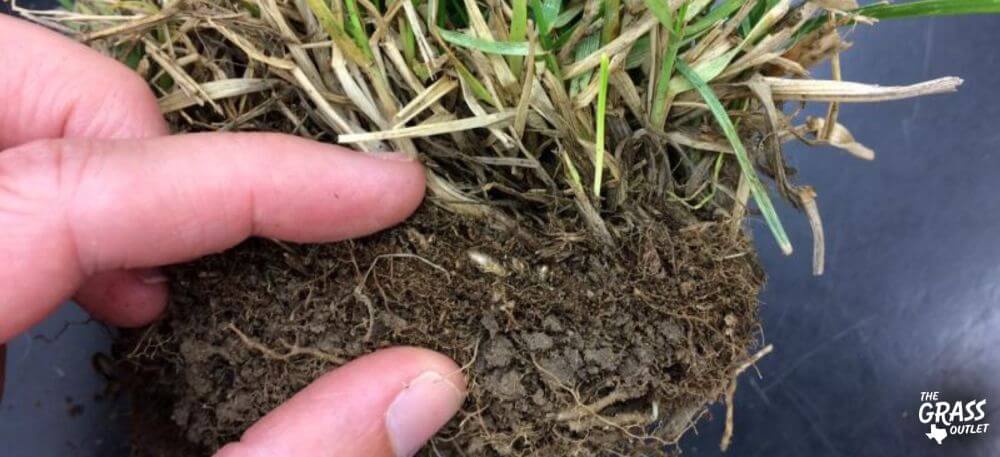
A Healthy and Tidy Lawn – Aesthetic and Satisfaction
Remember that a well-maintained lawn is a reflection of your home or workplace. If you care for and maintain it properly, your lawn will gain in aesthetics, bringing a unique sense of satisfaction. It will be a beautiful backdrop for gatherings and unforgettable moments with family and friends.
Just as the human body looks beautiful when it’s healthy, a lawn, first and foremost, requires its roots and grass to be healthy and nourished to display its most vibrant colors. Depending on the type of grass, the size of your lawn, your household’s habits, and the climate conditions in your region, you can always seek expert advice to establish effective methods of care and protection.
If you’re considering planting new lawns and are trying to decide which type of grass to choose, we recommend closely examining The Grass Outlet’s offerings. We’ve provided the most helpful information and details to help you make an informed decision.
